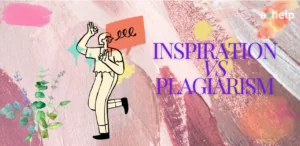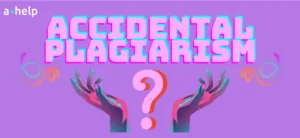Plagiarism can be both intentional and unintentional, but it is always important to be aware of its characteristics to protect yourself and your work. Patchwork plagiarism is a subtle yet serious academic offense that combines phrases and ideas from multiple sources into new text, often undetected but equally serious as direct plagiarism.

✅ AI Essay Writer ✅ AI Detector ✅ Plagchecker ✅ Paraphraser
✅ Summarizer ✅ Citation Generator
Patchwork Plagiarism Definition

Unlike direct plagiarism, which is straightforward copying, patchwork plagiarism is a more concealed form, making it harder to detect. But, tools like AcademicHelp Plagchecker can still identify it. It may include paraphrasing and original ideas, but the absence of credit to original authors marks it as plagiarism. In academic or professional writing, acknowledging sources using appropriate citation formats like APA or MLA is important to avoid this form of plagiarism.
Test our Free Plagiarism Checker
This type of plagiarism is challenging to identify, as it often occurs accidentally. However, the responsibility to credit original authors remains on the student, so it is your responsibility to proofread and edit everything. Such plagiarism can be inadvertently overlooked during writing, especially if the writer forgets the source of an idea. Therefore, precise tracking and acknowledging information sources is essential.
How Is Patchwork Plagiarism Different From Regular Plagiarism?
While all types of plagiarism aim to misappropriate intellectual property, patchwork plagiarism has its unique method. Regular plagiarism typically involves copying large text segments verbatim. In contrast, patchwork plagiarism is about pilfering small parts or phrases from a work and reassembling them. This form is often as deliberate as direct plagiarism but is sneakier by focusing on phrases or ideas instead of entire texts. Detecting patchwork plagiarism usually requires specialized plagiarism checkers, as simple searches may not reveal the similarities.
How Is Patchwork Plagiarism Different From Paraphrasing?

Paraphrasing, when correctly done with source citation, is a legitimate tool in academic writing. It involves summarizing an idea in one’s own words. However, it becomes plagiarism when not attributed correctly. Patchwork plagiarism, conversely, involves stealing phrases from multiple sources, often using exact phrases or close synonyms, to create an unoriginal amalgam of someone else’s work.
Examples of Patchwork Plagiarism
Patchwork plagiarism isn’t always a deliberate act; sometimes, it happens unintentionally. It can occur when a writer, having just referred to a source, inadvertently uses similar phrasing or ideas in their writing. This is especially common when writers do not take notes.


| Scenario | Original Source | Patchwork Plagiarized Version | Notes |
|---|---|---|---|
| Unintentional Copy | “The rapid advancement of technology in the 21st century has revolutionized communication.” | “Communication has been revolutionized by the rapid advancement of 21st-century technology.” | Writer unintentionally rephrases the idea after reading the source, without citation. |
| Intentional Phrase Borrowing | Source 1: “Climate change poses a significant threat to global biodiversity.” Source 2: “Rising sea levels due to global warming disrupt coastal ecosystems.” | “Global biodiversity is threatened by climate change, and the disruption of coastal ecosystems is caused by the rising sea levels of global warming.” | Deliberately combines phrases from two different sources, creating a new sentence. |
| Accidental Paraphrasing | “The study of history enables us to understand the complexities of human behavior.” | “Understanding human behavior becomes possible by studying history, which reveals its complexities.” | The writer inadvertently paraphrases the source’s idea without proper acknowledgment. |
| Blending Ideas | Source 1: “Artificial intelligence is transforming the job market, leading to new opportunities.” Source 2: “The automation of tasks by AI can lead to job displacement.” | “The transformation of the job market by artificial intelligence leads to both new opportunities and the displacement of jobs due to task automation.” | Combines ideas from two sources to form a new sentence, without citing the originals. |
So, as you can see, patchwork plagiarism and mosaic plagiarism are basically the same thing. Both can be avoided by following simple rules when creating your paper. So make sure you check paper for plagiarism before submitting it.
FAQ
Follow us on Reddit for more insights and updates.





Comments (0)
Welcome to A*Help comments!
We’re all about debate and discussion at A*Help.
We value the diverse opinions of users, so you may find points of view that you don’t agree with. And that’s cool. However, there are certain things we’re not OK with: attempts to manipulate our data in any way, for example, or the posting of discriminative, offensive, hateful, or disparaging material.